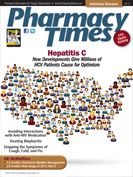Publication
Article
Pharmacy Times
A Decade of "Smart" Infusion Pumps
Author(s):

Tim Vanderveen, PharmD, MS
This month, we recognized the 10-year anniversary of “smart” infusion pumps—infusion devices with Dose Error Reduction Software, or DERS for short. Infusion pumps have been in use since the late 1960s, and for the first 30 years they could infuse fluids and drugs at any programmed setting within the range of the pump, with no warning to caregivers if the infusion was programmed in error. With a rate range from a few drops to a whole liter of fluid per hour, nurses were in need of a safety net to help prevent inadvertent and potentially serious IV medication errors.
I have often been asked why it took so long for infusion pump manufacturers to add “guardrails” into infusion pumps. The short answer is that until it was possible for individual hospitals to create in their pumps custom drug libraries and best practice drug limits, the idea of adding safety alerts was only a dream. Each time we heard about a death or serious injury due to an incorrectly programmed pump, we could only hope that caregivers would be more careful in the future. Of course, this was of little comfort knowing how easy it was to make a mistake and how vulnerable nurses were without a safety net. Imagine driving on a winding mountain road with no guardrails, no center line, no caution signs or stop lights—that example mirrors the reality of infusion pump therapy as we entered the 21st century.
The technological breakthrough was the flash EPROM—basically, a chip that could be programmed with a hospital-specific drug library. Because drugs may be used off-label and IV practices are often not standardized, infusion pump manufacturers began to market “dumb” pumps that hospitals could make “smart.” As I reflect back on the first Alaris smart pumps, I find it amazing that even the very limited capabilities at the initial release had such a game-changing impact on our industry. Suddenly, we were in the software business and working feverishly to expand pump safety features to meet the demands of early adopters. We helped hospitals interpret data collected from the near misses and good catches, and we worked with customers and thought leaders to reduce practice and library variation, fine tune drug limits, and interpret what Dr. David Bates called the new “treasure trove” of infusion data that was stored in each pump.
My friend and colleague, Phil Schneider, has tracked the adoption of medication safety technology over the years, and I have heard him lecture on the typical adoption cycle for new technology in hospitals. Phil will tell you it is often a 20-year adoption period, and could be even longer in some cases. Perhaps because infusion pumps have been in use for so long, and most other technologies that he has tracked are new and not replacements, the adoption has been much faster than bar code medication administration (BCMA) and computerized prescriber order entry (CPOE). In his latest survey, the adoption rate of smart IV pumps is almost 70% after only 10 years. One fact that has accelerated smart pump adoption is analogous to air bags in automobiles—these safety features now come standard. And based on the “good catches” that the pump logs document, it is very evident that the pumps with DERS have prevented many potentially serious and possibly fatal medication errors. In a future update, I will discuss what we’ve learned from the use of smart pumps over the years, especially the information that we have gleaned from tracking millions of alerts from hundreds of hospitals across the United States. As I look back on the past 10 years, we have made tremendous progress in creating and adopting a safety net that is focused on drug administration and therapeutic application. As I look ahead, the focus will be on making infusion pumps part of a much larger medication ecosystem, and in place of low and high dose limits, the pumps will inherently know what the right dose should be. The concept of guardrails and airbags will still be relevant, but they will be patient—not drug—specific. In the February 2002 Institute for Safe Medication Practices Newsletter, the flowing quote appeared: “With CPOE and BCMA, and now ‘smart’ infusion pumps, we may finally have a solid defense against the most serious medication errors.” If I were to rewrite this today, I would say, “With the integration of CPOE, BCMA and smart infusion pumps, we now have a solid defense against serious medication errors.”
Tim Vanderveen is Vice President, Center for Safety and Clinical Excellence, CareFusion.
He credits much of his career to circumstance and serendipity. But, it was clearly no accident when his plans to become a veterinarian led him instead to a career in pharmacy.
In his clinical practice, Dr. Vanderveen specialized in intravenous nutrition and co-founded one of the first multidisciplinary nutrition support teams. His continued work in IV medication therapy drew him to the infusion device industry, where he went on to author patents in infusion technology and was one of the creators of Smart IV pumps. Today, his work continues to focus on the challenges and complexity of the medication use process. As vice president of the CareFusion Center for Safety and Clinical Excellence, he’s responsible for directing clinical, educational and research activities related to medication safety.
Dr. Vanderveen holds a master’s degree from Purdue University School of Pharmacy and a PharmD degree from the Medical University of South Carolina.







